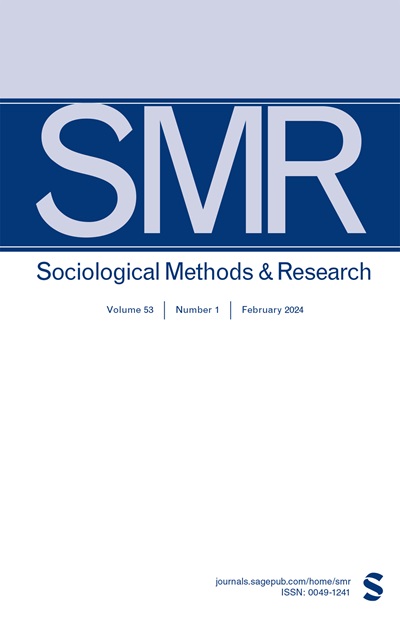Politics as Usual? Measuring Populism, Nationalism, and Authoritarianism in U.S. Presidential Campaigns (1952–2020) with Neural Language Models
IF 6.5
2区 社会学
Q1 SOCIAL SCIENCES, MATHEMATICAL METHODS
引用次数: 11
Abstract
Radical-right campaigns commonly employ three discursive elements: anti-elite populism, exclusionary and declinist nationalism, and authoritarianism. Recent scholarship has explored whether these frames have diffused from radical-right to centrist parties in the latter’s effort to compete for the former’s voters. This study instead investigates whether similar frames had been used by mainstream political actors prior to their exploitation by the radical right (in the U.S., Donald Trump’s 2016 and 2020 campaigns). To do so, we identify instances of populism, nationalism (i.e., exclusionary and inclusive definitions of national symbolic boundaries and displays of low and high national pride), and authoritarianism in the speeches of Democratic and Republican presidential nominees between 1952 and 2020. These frames are subtle, infrequent, and polysemic, which makes their measurement difficult. We overcome this by leveraging the affordances of neural language models—in particular, a robustly optimized variant of bidirectional encoder representations from Transformers (RoBERTa) and active learning. As we demonstrate, this approach is more effective for measuring discursive frames than other methods commonly used by social scientists. Our results suggest that what set Donald Trump’s campaign apart from those of mainstream presidential candidates was not the invention of a new form of politics, but the combination of negative evaluations of elites, low national pride, and authoritarianism—all of which had long been present among both parties—with an explicit evocation of exclusionary nationalism, which had been articulated only implicitly by prior presidential nominees. Radical-right discourse—at least at the presidential level in the United States—should therefore be characterized not as a break with the past but as an amplification and creative rearrangement of existing political-cultural tropes.政治照旧?用神经语言模型测量美国总统竞选中的民粹主义、民族主义和威权主义(1952-2020
极右运动通常采用三种话语元素:反精英民粹主义、排斥性和衰落主义民族主义以及威权主义。最近的学术研究探讨了这些框架是否已经从激进右翼政党扩散到中间派政党,因为后者努力争取前者的选民。相反,这项研究调查的是,在被激进右翼利用之前,主流政治行动者是否使用过类似的框架(在美国,唐纳德·特朗普的2016年和2020年竞选)。为此,我们在1952年至2020年间的民主党和共和党总统候选人的演讲中确定了民粹主义、民族主义(即对国家象征性边界的排斥性和包容性定义,以及对高低民族自豪感的表现)和威权主义的实例。这些框架是微妙的,不常见的,多义的,这使得它们的测量困难。我们通过利用神经语言模型的功能来克服这个问题,特别是来自变形金刚(RoBERTa)和主动学习的双向编码器表示的鲁棒优化变体。正如我们所证明的,这种方法比社会科学家常用的其他方法更有效地测量话语框架。我们的研究结果表明,将唐纳德·特朗普的竞选活动与主流总统候选人区分开来的不是一种新政治形式的发明,而是对精英的负面评价、低民族自豪感和威权主义的结合——所有这些都长期存在于两党之中——以及对排他性民族主义的明确唤起,而之前的总统候选人只是含蓄地表达了这一点。因此,极右翼话语——至少在美国总统层面——不应被视为与过去的决裂,而应被视为对现有政治文化修辞的放大和创造性的重新安排。
本文章由计算机程序翻译,如有差异,请以英文原文为准。
求助全文
约1分钟内获得全文
求助全文
来源期刊

Sociological Methods & Research
Multiple-
CiteScore
16.30
自引率
3.20%
发文量
40
期刊介绍:
Sociological Methods & Research is a quarterly journal devoted to sociology as a cumulative empirical science. The objectives of SMR are multiple, but emphasis is placed on articles that advance the understanding of the field through systematic presentations that clarify methodological problems and assist in ordering the known facts in an area. Review articles will be published, particularly those that emphasize a critical analysis of the status of the arts, but original presentations that are broadly based and provide new research will also be published. Intrinsically, SMR is viewed as substantive journal but one that is highly focused on the assessment of the scientific status of sociology. The scope is broad and flexible, and authors are invited to correspond with the editors about the appropriateness of their articles.
 求助内容:
求助内容: 应助结果提醒方式:
应助结果提醒方式:


